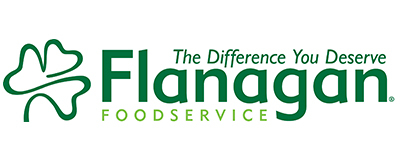
We collect basic website visitor information on this website and store it in cookies. We also utilize Google Analytics to track page view information to assist us in improving our website.

Have you opened a drive-thru to supplement income from takeout and delivery? Here are some key considerations to make sure you have the safest, cleanest window selling environment, from Paul Medeiros, Managing Director, Consulting, Technical and Retail Audit Services at NSF International.
PHYSICAL DISTANCING REMAINS KEY
Drive-thru employees may find the two-metre distance guide challenging, especially if drivers stop their vehicle too close to the window or if staff need to take the meal out directly to a parked car. Here are some ideas that may help keep physical distance working:
1. Ensure your bollards are properly positioned (and present) to help guide drivers away from the window. Attach a small flag (similar to the flags you see protruding from the side of bikes to keep cars away.
2. If your drive-thru window design doesn’t allow the installation of a plexiglass shield (like those in grocery retail), train employees to avoid leaning out the window or moving closer than necessary to the vehicle. A plexiglass is still the best bet, and all you need is around 12 inches at the bottom to slide through products.
3. Place signage at your drive-thru menu board, letting your customers know that you’re ‘keeping space’ and asking them to do the same.
4. Consider using takeout trays for all drinks as they reduce the risk of employees making direct contact with customers.
COMMON TOUCH POINTS FOR THE CONSUMER
Restrict payment to tap only, online payments or other ‘frictionless’ ordering methods. If cash is used, the employee needs to wash hands thoroughly after handling the cash and before touching other surfaces or items. The debit card machine keys also need to be wiped down between customers.
COMMON TOUCH POINTS FOR THE EMPLOYEE
Conduct a safely check and verify the drive-thru window automatic open/close mechanism is working. Manually opening and closing the window introduces a common touchpoint.
HANDWASHING
Employees need to wash hands thoroughly after each customer order.
BAG HAND-OFF
Even though your staff will wash their hands after each order, care must be taken to avoid hand contact. Bags are easier to handle in this case but takeout drinks and trays often result in hand-to-hand contact. Note: with all the extra handwashing, rotate employees often so that hands get a rest from washing.
GARBAGE HANDLING
Most customers are very considerate, but some have taken to throwing out potentially dangerous items in drive-thru trash receptacles. The option of removing these (and posting accompanying signage) is an option, but could result in greater littering. The most common option is to make sure the employees who handle the garbage wear adequate PPE (gloves and apron) and that the garbage is double-bagged. Assume all garbage contains potentially harmful materials including used masks.
RETURNED ITEMS
Do not handle a bag or package after it has been given to a customer. If a customer tells you an item is missing from the order, hand them another.
COHORT STAFF
Hospitals and nursing homes taught us long ago the value of ‘cohorting’ staff and patients. Cohorting basically refers to the segregation of people into ‘groups’ or ‘pods’ or ‘bubbles’ or ‘shifts’. By cohorting people and avoiding contact between cohorts, you minimize the spread of infection. If someone in a cohort gets ill, then only that cohort is affected. The food industry has been applying this concept as one way to address COVID-19 risks. This should serve as a reminder to all foodservice companies with multiple sites to make sure they limit their employees to working one site only. If possible, maximize employee hours so they are not incentivized to work multiple part-time jobs, which introduces them to various ‘cohorts’ and could increase both their risk and yours.
And two other tips:
• DRIVE-THRU SHOULD SUPPLEMENT TAKEOUT. Not everybody has a car so recognize you may be missing out on sales if you do away with instore/curbside takeout.
• CASH MAY STILL BE KING AT TIMES. Not everybody has access
to noncash payment options, so be prepared to have to handle some cash or deny
some customers access to food.
This post was shared in connection with Brand Points Plus, a FREE loyalty program for independent operators. Easily collect points for amazing rewards, if you're not a member - we highly recommend you become one.
Learn more about Brand Points Plus

